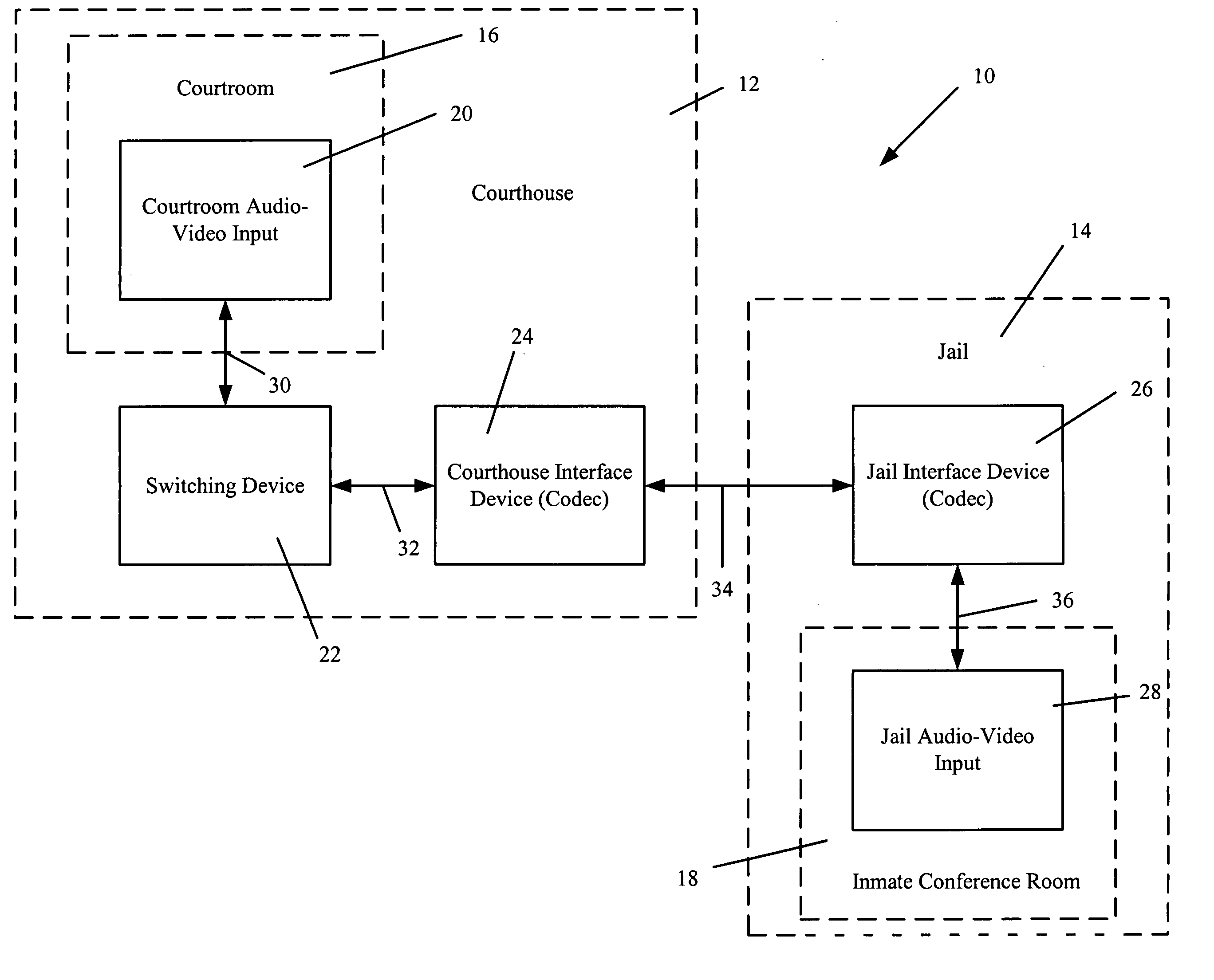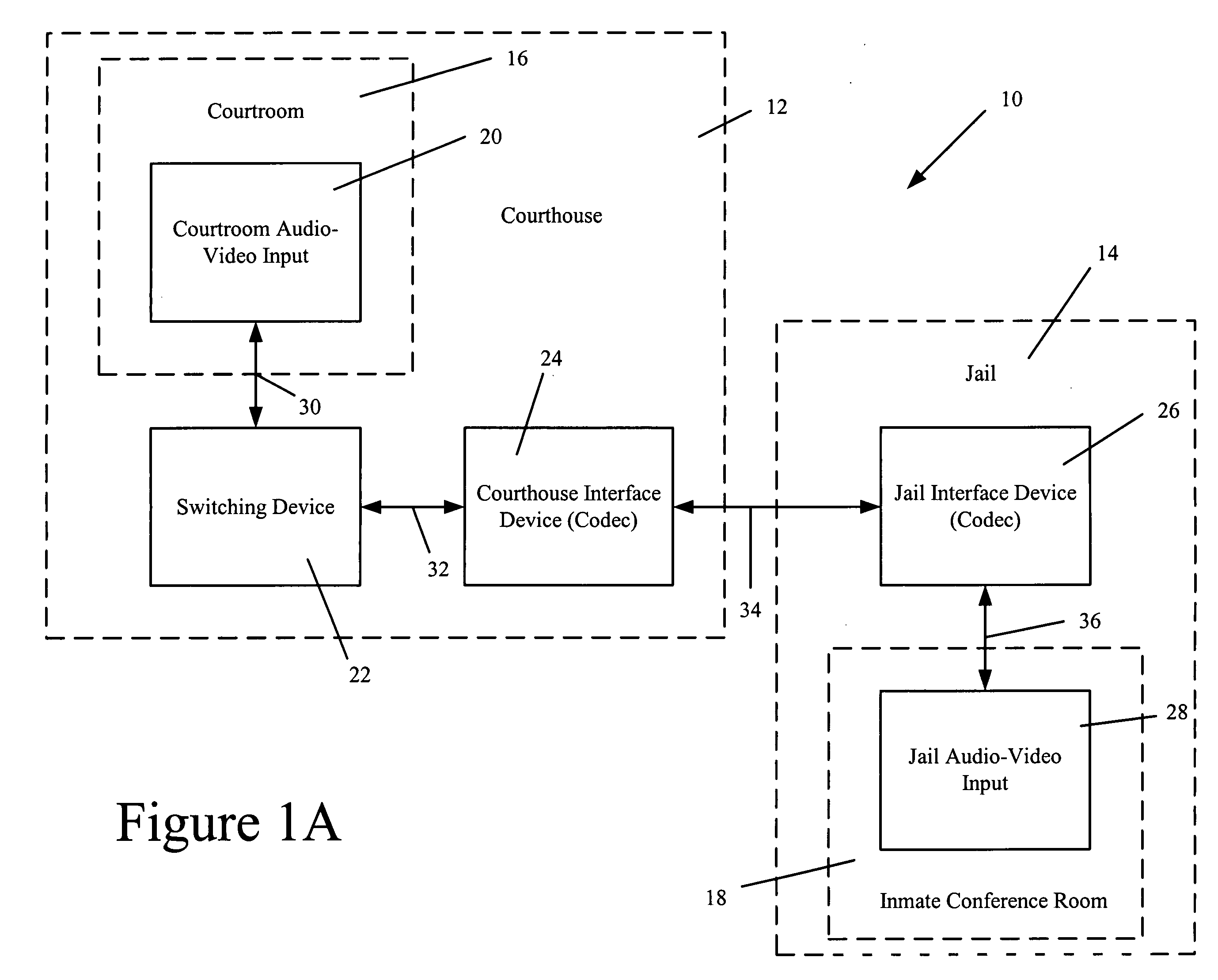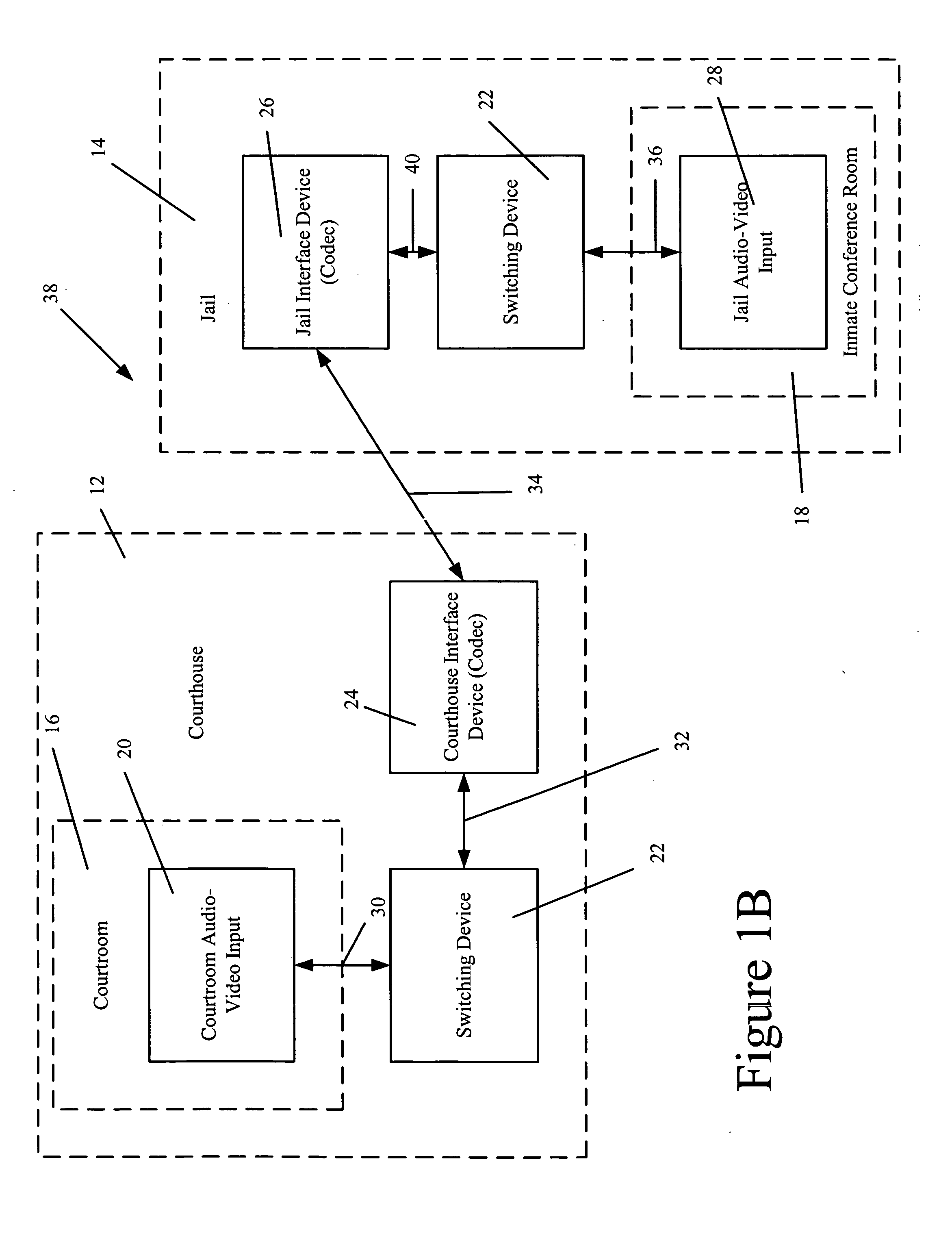Video conference system providing private and attorney-client privileged communications
a video conference system and private client technology, applied in the field of video conference systems, can solve the problems of delay in the progress of the trial, the actual transportation itself is expensive, and the personnel required to provide adequate security is expensiv
- Summary
- Abstract
- Description
- Claims
- Application Information
AI Technical Summary
Benefits of technology
Problems solved by technology
Method used
Image
Examples
Embodiment Construction
[0077] In the discussion that follows, the system of the present invention will be described in connection with a video conferencing apparatus that permits audio-visual (“A / V”) communication between a courtroom and a jail. (It is noted that, while there is a definitional distinction between the term “jail” and “prison,” the two terms are used interchangeably herein.) The system also provides for the display and recording of AN images within the courtroom. While the courtroom / jail environment defines the parameters of the preferred application of the present invention, the invention is not limited solely to this specific environment. To the contrary, as should be appreciated by those skilled in the art, the invention has wide applicability to a number of different environments, of which the courtroom / jail setting is but one. For example, it is contemplated that the invention may provide AN communications between two parties in a negotiation, mediation or arbitration (or any other typ...
PUM
 Login to View More
Login to View More Abstract
Description
Claims
Application Information
 Login to View More
Login to View More - R&D
- Intellectual Property
- Life Sciences
- Materials
- Tech Scout
- Unparalleled Data Quality
- Higher Quality Content
- 60% Fewer Hallucinations
Browse by: Latest US Patents, China's latest patents, Technical Efficacy Thesaurus, Application Domain, Technology Topic, Popular Technical Reports.
© 2025 PatSnap. All rights reserved.Legal|Privacy policy|Modern Slavery Act Transparency Statement|Sitemap|About US| Contact US: help@patsnap.com



